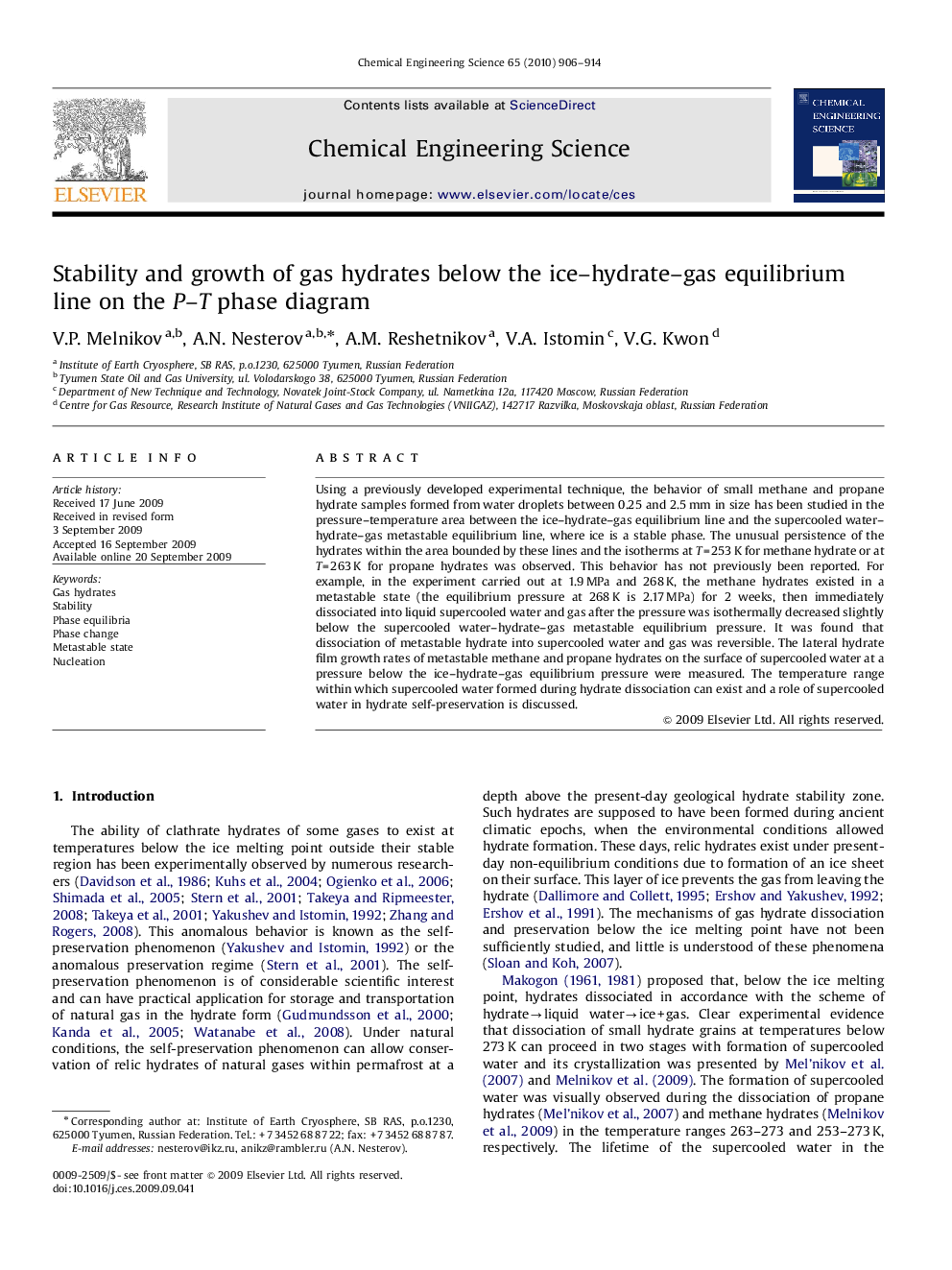| Article ID | Journal | Published Year | Pages | File Type |
|---|---|---|---|---|
| 157522 | Chemical Engineering Science | 2010 | 9 Pages |
Using a previously developed experimental technique, the behavior of small methane and propane hydrate samples formed from water droplets between 0.25 and 2.5 mm in size has been studied in the pressure–temperature area between the ice–hydrate–gas equilibrium line and the supercooled water–hydrate–gas metastable equilibrium line, where ice is a stable phase. The unusual persistence of the hydrates within the area bounded by these lines and the isotherms at T=253 K for methane hydrate or at T=263 K for propane hydrates was observed. This behavior has not previously been reported. For example, in the experiment carried out at 1.9 MPa and 268 K, the methane hydrates existed in a metastable state (the equilibrium pressure at 268 K is 2.17 MPa) for 2 weeks, then immediately dissociated into liquid supercooled water and gas after the pressure was isothermally decreased slightly below the supercooled water–hydrate–gas metastable equilibrium pressure. It was found that dissociation of metastable hydrate into supercooled water and gas was reversible. The lateral hydrate film growth rates of metastable methane and propane hydrates on the surface of supercooled water at a pressure below the ice–hydrate–gas equilibrium pressure were measured. The temperature range within which supercooled water formed during hydrate dissociation can exist and a role of supercooled water in hydrate self-preservation is discussed.
